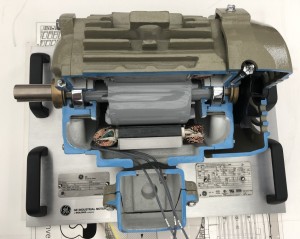The temperature rise of a motor‘s stator windings is a key factor affecting motor performance and life. Understanding the relationship between current and temperature is essential for effective motor management. Studies have shown that the temperature rise of an electric induction motor‘s stator windings is positively correlated with current. As current increases, so does the heat generated within the windings, which can lead to overheating and potential failure if not managed properly.
One of the effective measures to control the temperature rise of the motor is to improve the thermal conductivity of the winding. For motors with low winding slot filling rate, increasing the number of painting is beneficial. Painting not only provides insulation, but also improves the heat dissipation performance of the winding. In addition, the use of vacuum pressure painting technology can further improve the thermal conductivity, thereby achieving better thermal management and reducing the risk of overheating.
Another way to control temperature rise is to adjust the electromagnetic parameters of the motor. By fine-tuning these parameters (such as rotor and stator design), the heat generated during operation can be effectively managed. This adjustment can make the motor more efficient and run cooler, thereby extending its service life and improving reliability.
Controlling ac motor temperature rise is critical to maintaining optimal performance. Key measures include understanding the relationship between current and temperature, improving thermal conductivity through painting techniques, and adjusting electromagnetic parameters. By implementing these strategies, motor operators can ensure their equipment operates efficiently and reliably, minimizing the risk of overheating and related failures.
Post time: Jan-07-2025


